One of the most visible historical monuments is the Slavin Memorial, perched on the hill overlooking the heart of Bratislava. An obelisk topped with a statue of a victorious Soviet Soldier greets visitors from the city skyline. The memorial may stir mixed feelings due to its Soviet-era origins, but it still remains one of the most important historical landmarks of the capital city.

Historical Background
The Slavin Memorial, built between 1957 and 1960, is a socialist realism masterpiece designed by Ján Svetlík. Other artists who contributed to the final work include Tibor Bártfay, Jozef Kostka, and Rudolf Pribiš.
The primary purpose was to pay tribute to the Soviet Red Army soldiers. They came to liberate Bratislava from the Nazi occupation and died in the fights in April 1945. The place is also a military cemetery with all 6845 Soviet soldiers buried in six mass graves and 317 individual graves.
Besides being a mass grave, it is also a political symbol. It reflects the narrative of heroism and liberation that was strongly supported in post-war Czechoslovakia, when the country was still under the influence of the USSR.
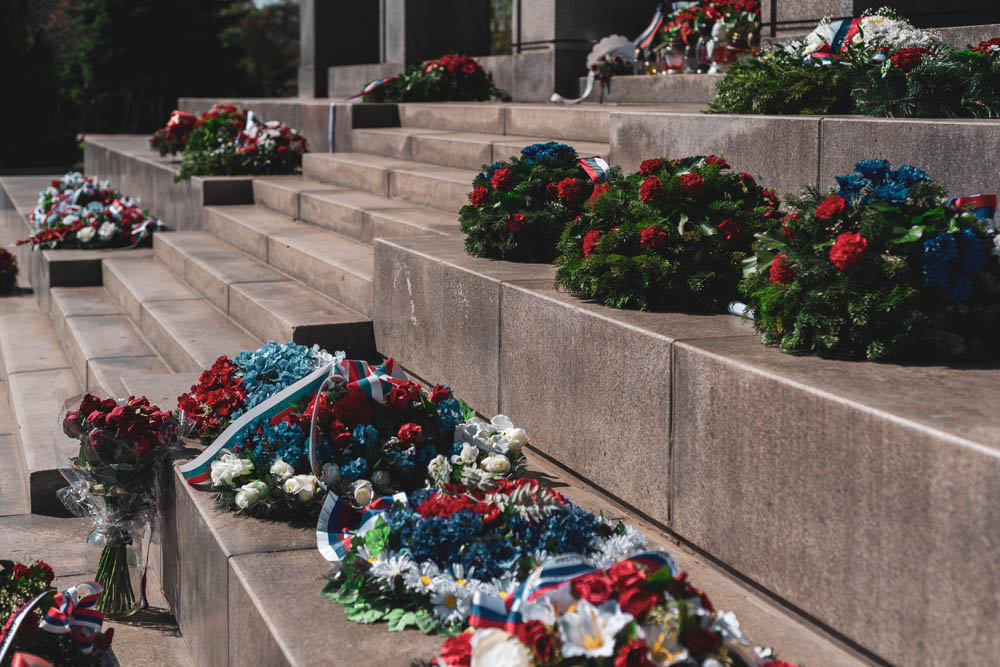
If you ever happen to visit Moscow and see its large-scale historical buildings, then the Slavin Memorial represents the same heroic gigantism. The massive scale, formal layout, and heroic sculptures align with Soviet socialist realism. The Slavin Memorial was designed to inspire awe and convey the colossal ideological strength to which the person facing it feels like a dwarf.
Even today, the place hosts ceremonies on the 4th of April. The president of Slovakia is often present. Some time ago, in 2005, Vladimir Putin visited Slavin while he was attending a meeting with the American president, George Bush. You could also see around 20 WWII veterans present at the site. Laying wreaths and holding commemorations are typical ceremonial activities during such events.
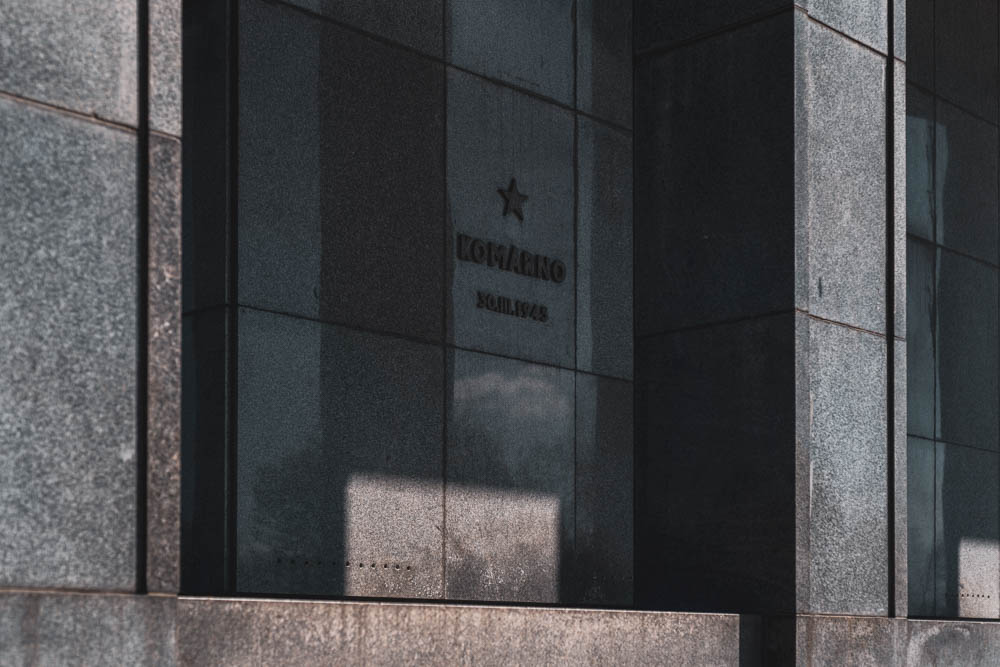
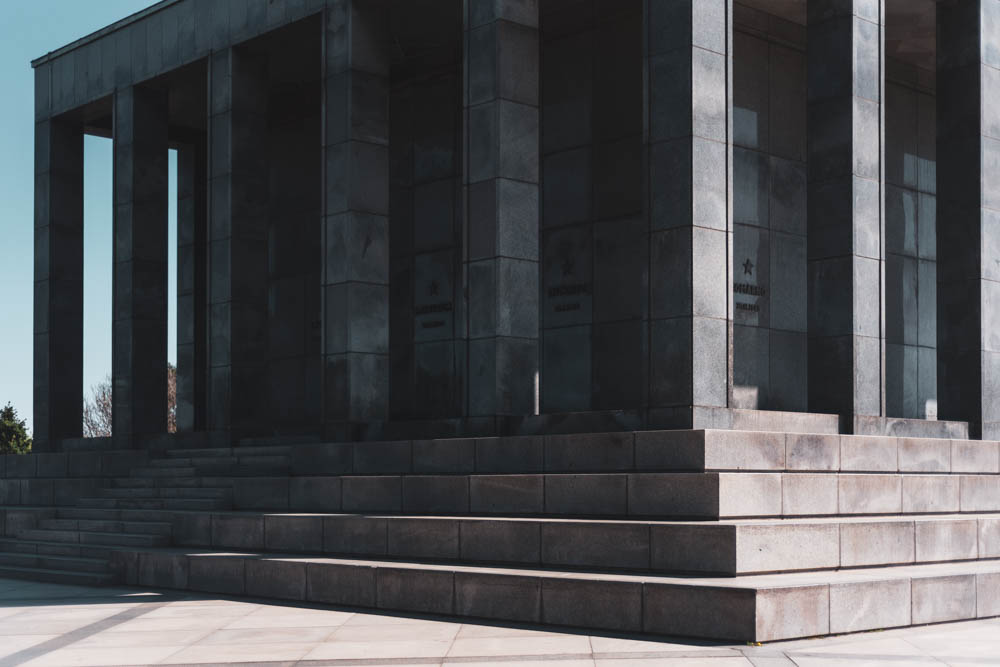
What to Expect
Slavin Memorial is open 24/7 and free of charge. While it covers the war theme, the place is quite the opposite. The well-kept lawns, trees, and birds singing create a peaceful atmosphere that contrasts with the harshness of the war. It is common to find people there sitting on the benches, reading, gazing out across the city, or flying a drone. However, be aware that the site has no shops or restrooms.
As you climb the stairs from below, a vast elevated plaza greets you. Its dominant feature is the 39-meter-tall obelisk with the Soviet soldier statue on top. The statue holds a flag and rifle in a triumphant pose.
Below the obelisk, the ceremonial hall has commemorative inscriptions in Russian and Slovak. Engraved are the names of Slovak towns and the dates when they were liberated by the Red Army. Nearby are the six mass graves organized in tidy rows.
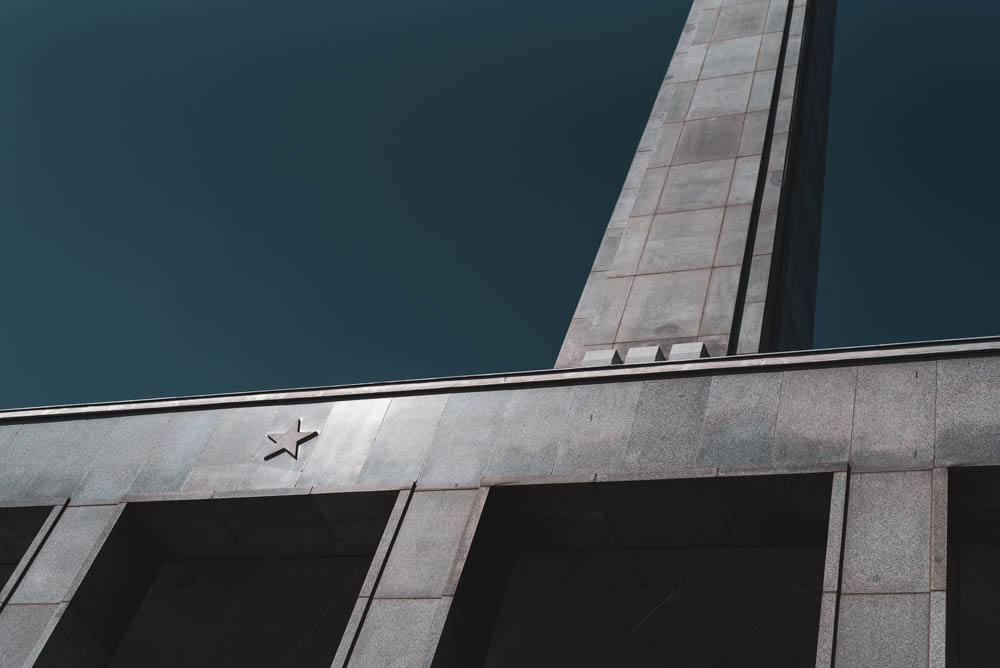
The memorial includes additional sculptures along the stairs and terraces. They all depict war–and–peace themes and invite the visitor to rethink and reflect. You will find the sculptural group After the Battle by Ján Kulich, At the Grave of a Fallen Comrade by Tibor Bártfay, and Gratitude by Jozef Kostka. At the entrance to the site, there’s also the relief Oath to the Battle Flag by Ladislav Snopko.
One of the memorial’s most rewarding features is the view of Bratislava. You can spot the Bratislava Castle, the Danube River, the Old Town’s rooftops, and the modern skyline with bridges and higher buildings. If the weather is nice and sunny, you can even see the Austrian Alps in the distance.
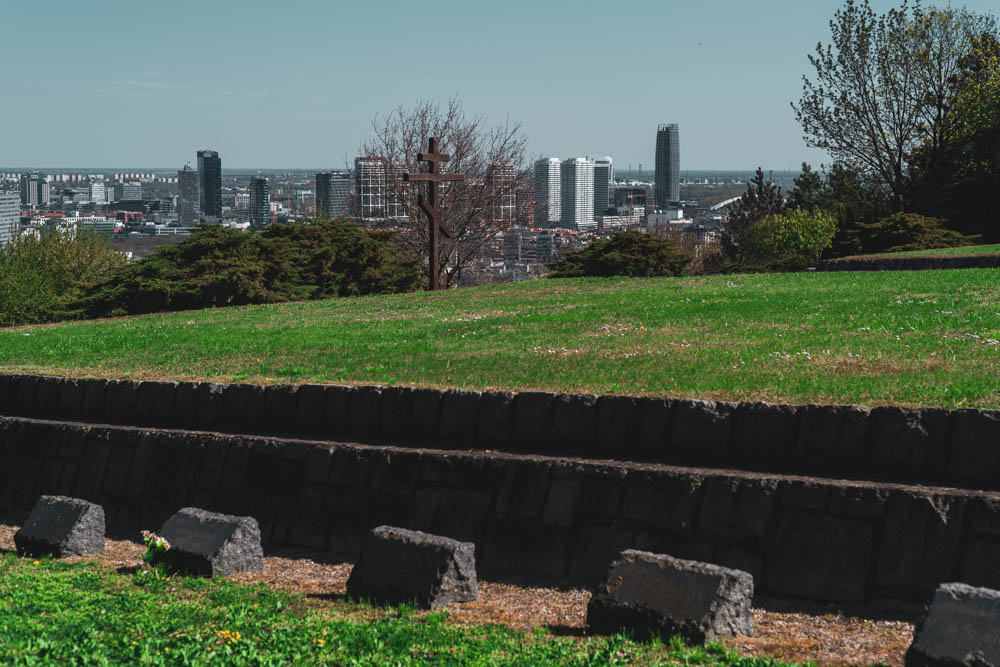
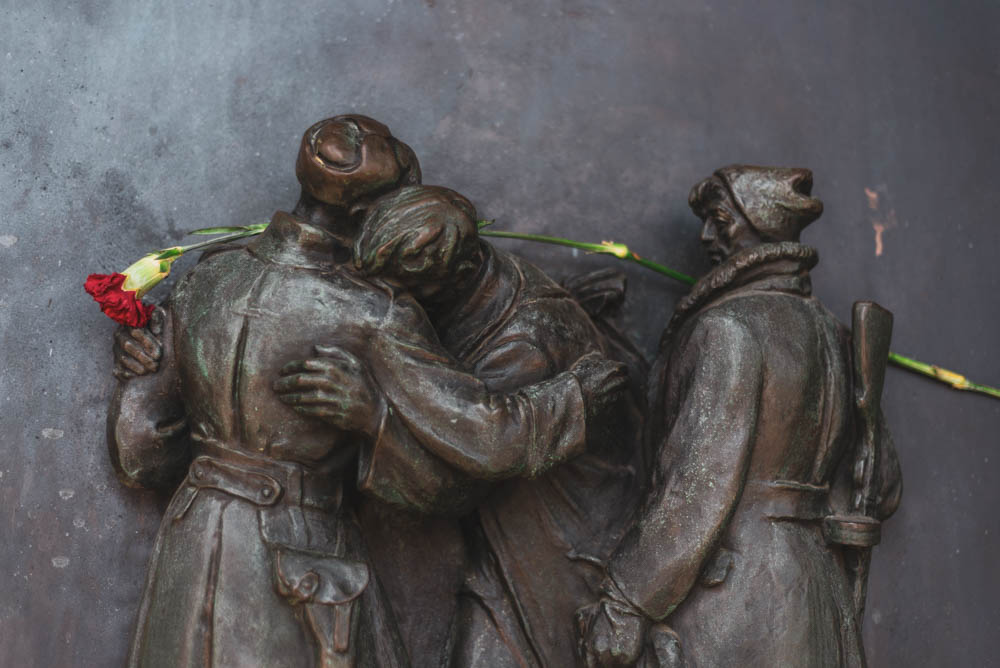
How to Get There
The easiest way is to take a taxi, but taking a bus or walking is a better option if you are in the city center or near the train station. There is a bus number 147 which starts at Hodžovo Square and goes up to the Slavin. If you are at the train station, you can walk down to the bus stop Pod Stanicou, then turn west and walk up the hill. It should take you around 10 to 15 minutes if you do not stop to take the photos. While walking, you will need to cross Puškinove Schody or Pushkin Stairs.
Puškinove Schody
A popular pedestrian shortcut that connects Slavin with the busy city center and the train station. Over 200 stairs were renewed in 2019, with some graffiti on the walls and plants growing along the way on both sides. I couldn’t find much information about the stairs. Their name is likely derived from Puškinova Street, but they also allude to the famous Potemkin Stairs, the monumental stairway in Odessa. At the same time, they seem to evoke the lingering “ghost of Russia” present at their end.
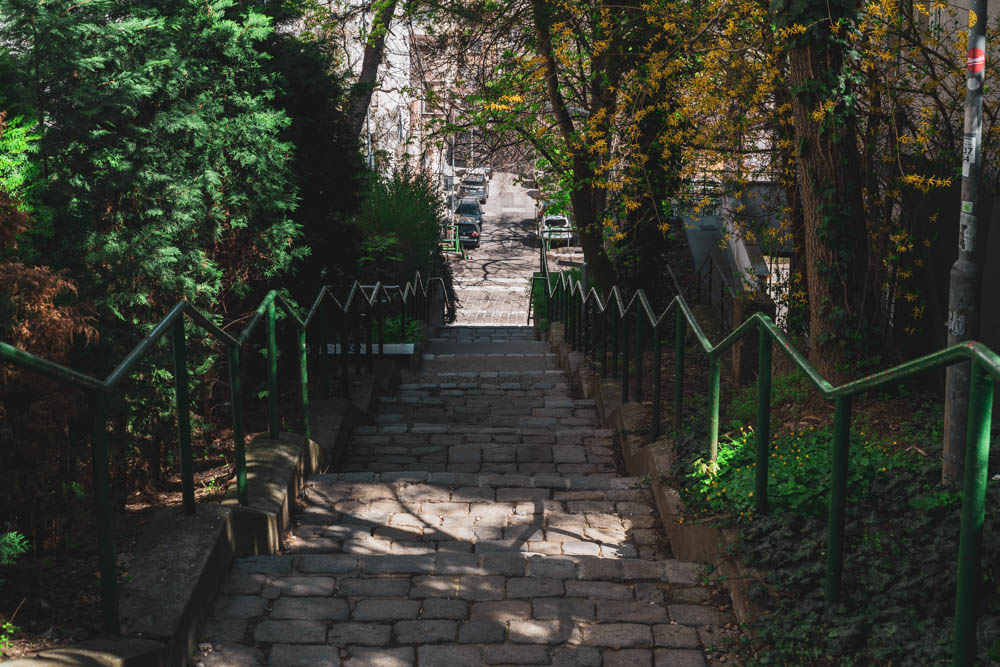
If you found Slavin compelling, you’ll likely enjoy exploring more of Bratislava’s quiet corners and architectural layers. Check out my deep dive into Discovering Bratislava’s Hidden Gems.
For fans of historical depth and solemn beauty, Crematorium and Urn Grove in Bratislava offers another powerful look at postwar design and remembrance. And if architecture fascinates you, step into the concrete legacy of socialism with Bratislava’s Brutalist & Communist Architecture: Relics of a Concrete Era I.
Sources:
domov.sme.sk/c/1946552/putin-na-slavine-dakujem-ze-si-uctievate-nasich-padlych.html
sk.wikipedia.org/wiki/Slav%C3%ADn_(Bratislava)
Sources: